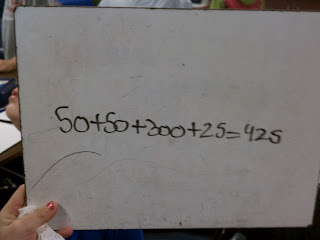I am guest blogging today on Engaging Learners and sharing a recent blog that I posted over at my other blog, ScienceGal. It is about setting expectations for Cooperative Grouping in Science and I thought it was very valuable and I should share it here too! So enjoy the post today...
I know...I know...you have heard me say this a million times. It is important to have groups in science and to have individual jobs while you are working together!
So how do you introduce it the first time????
We begin by Introducing our science groups. Each group has 4 people in it (as best as possible - because I have 22 students I do have two groups with 5 in them).
Each child is assigned a color as you see. Then I have a chart that shows the jobs. I can easily rotate the tiles daily to switch jobs.
We began working as groups by setting expectations. If you are going to work as a group on a task, what do you need to do in order to be successful? And what do the jobs mean?
Then we worked on two simple tasks. The first was to work as a team to build a house of cards.
The next was to work as a team to solve a cup challenge. I love this second challenge! It is one I learned from FOSS several years ago and truly involves team work. You will need 6 solo cups,1 rubber band and 4 strings (cut about 24 inches) for
each team. To prep for the activity you will need to tie the string to the rubber band in four spots...like this...
Why? It becomes your cup challenge tool. Each person will hold on to one piece of the string and working together will manipulate the rubber band to grasp and move a solo cup. Intrigued????
Get your students into their groups of four and send your Getter 1 to the materials spot to get 6 solo cups and one rubber band tool.
Students will need to make a structure that looks like this:
Have your Starter create this structure.
Then as a team, they will need to move the cups from this structure to a pyramid with three cups on bottom, then two cups then one on top.
These guys are showing you how to manipulate the tool and you can also see the finished product at the side.
When you are finished, have Getter 2 clean up the materials and return them to the materials spot.
And then, once everyone has returned to their seats, the Reporter from each group will share out what they did in their group that day (or in the future read their notebook entry.)
What do you think???
 Are you a binder addict like me?? I have so many binders I sometimes forget which one I am using. I have my data binder, my meeting binder, my math binder, my every day binder, and my reading binder, and my....well, you get the drift!
Are you a binder addict like me?? I have so many binders I sometimes forget which one I am using. I have my data binder, my meeting binder, my math binder, my every day binder, and my reading binder, and my....well, you get the drift!  Anyway...anyone who binders knows that the best tool for the job is a 3 ring hole puncher.
Anyway...anyone who binders knows that the best tool for the job is a 3 ring hole puncher. 





































